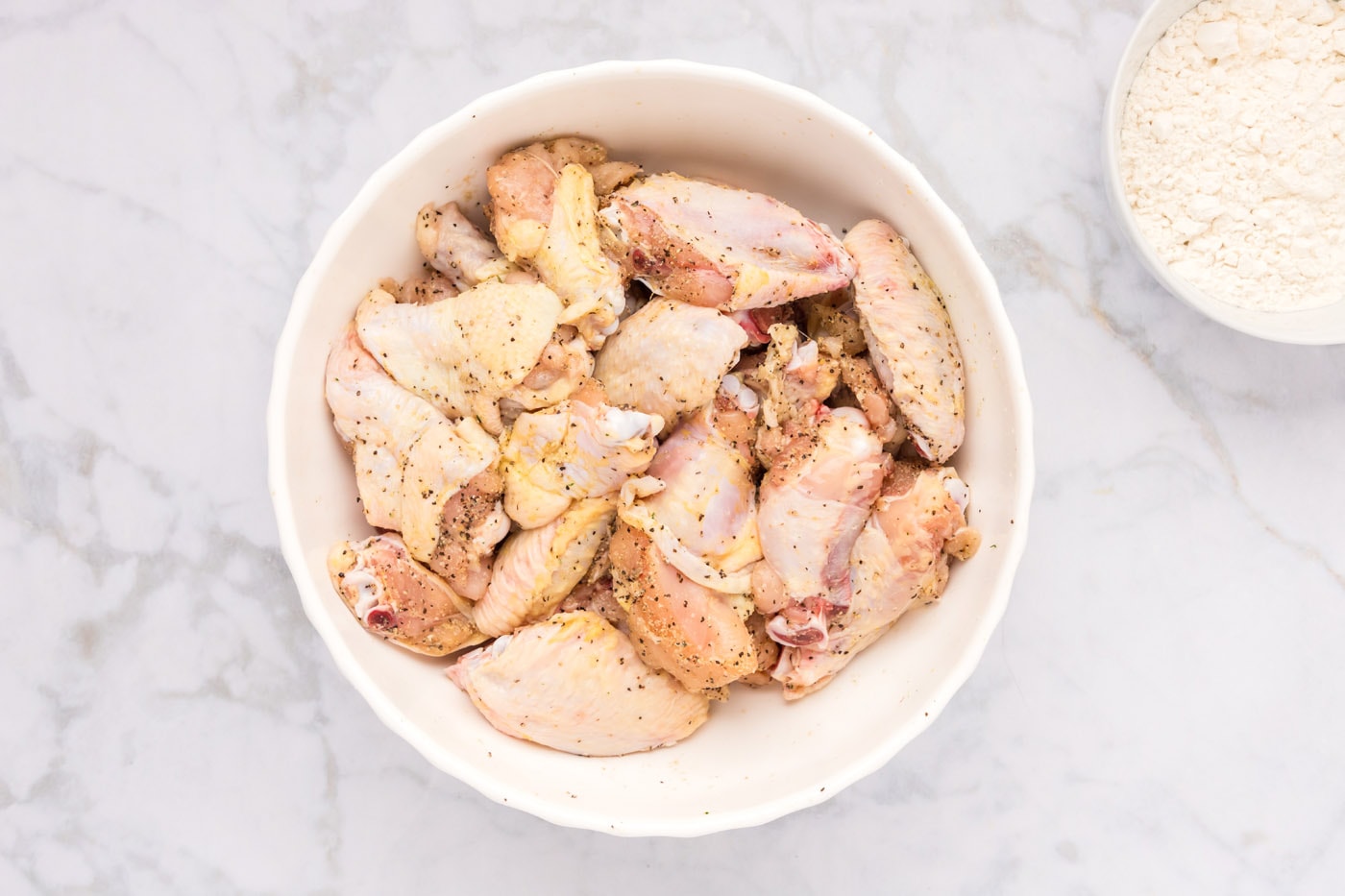Frying up a batch of crispy, flavorful chicken wings is one of life’s great culinary pleasures. But a key question looms over this delicious endeavor – should you season the wings before or after frying?
As a chicken wing enthusiast, I used to just toss my wings in the fryer without much forethought. But after lackluster results, I decided to dig deeper into the pre-frying seasoning debate. After plenty of trial-and-error (and many baskets of wings!), I’ve discovered the truth of this polarizing topic.
So let’s settle this debate once and for all – to season or not to season before frying? Below I’ll outline the pros and cons of pre-frying seasoning, helpful tips and best practices, and the ultimate verdict on achieving flavor nirvana.
Why Pre-Fry Seasoning is Essential
Seasoning chicken wings before frying is crucial for two key reasons:
1. Boosts Flavor Within the Meat
Pre-frying seasoning enables the spices to deeply penetrate the chicken skin and meat before cooking This infuses the wings with well-rounded, intense flavor in each bite
Post-frying seasoning often only coats the surface. So you sacrifice flavor when moving beyond the outer layer.
2. Contributes to Crispier Skin
Pre-seasoning draws out moisture from the skin through osmosis This drying effect helps the skin get ultra crispy when fried.
The drier the wing skin pre-frying, the better it will bubble, brown, and crisp up beautifully.
So pre-fry seasoning boosts both flavor and texture – a win-win!
Dry Rubs vs. Wet Marinades
When seasoning wings pre-frying, you have two options – dry rubs or wet marinades. Here’s how to choose:
Dry Rubs
Best for frying – creates that desirable dry skin. Blend of dried spices and herbs.
Wet Marinades
Tenderizes meat well but can make wings too moist. Liquid-based mixtures like buttermilk.
The Verdict: Dry rubs lead to crisper, crunchier wings straight from the fryer. So I suggest using those pre-frying instead of wet marinades.
Potential Pitfalls to Avoid
While pre-frying seasoning has clear advantages, some potential downsides need to be addressed:
Murky Oil
Heavy seasonings pre-frying can detach into the oil, making it dirty faster.
Burnt Spices
Some seasonings like paprika burn quickly at high heat.
Tips to Overcome Pitfalls
With the right techniques, you can reap the rewards of pre-frying seasoning while avoiding the pitfalls:
-
Use a light hand – don’t overdo it on the seasoning amount.
-
Pat wings dry – remove excess moisture before frying so seasoning adheres.
-
Avoid powdery spices – they detach into oil easily.
-
Monitor oil temperature – fry between 350-375°F to prevent burning.
-
Choose resilient spices – opt for spices like smoked paprika that withstand heat.
Step-By-Step Guide to Pre-Fry Seasoning Perfection
Follow my complete process for perfectly seasoned, ultra-crispy fried chicken wings:
1. Pat Wings Dry
Remove excess moisture so seasoning sticks better.
2. Create Dry Rub
Combine spices like salt, pepper, garlic powder, paprika, chili powder, etc.
3. Generously Season Wings
Apply dry rub evenly over entire surface of wings.
4. Let Sit for 30-60 Minutes
Allow seasonings to penetrate deeply into the meat.
5. Fry at 350-375°F
Maintain proper oil temperature to avoid burning spices.
6. Toss in Sauce (Optional)
Buffalo, barbecue, teriyaki – the choice is yours!
The Verdict on Pre-Fry Seasoning
After copious rounds of testing, the evidence points clearly in favor of seasoning wings before frying.
The benefits of enhanced flavor and crispy skin far outweigh the potential pitfalls. As long as you follow proper technique, you can avoid the downsides while reveling in the flavor glory of seasoned-before-frying wings!
So embrace dry rubs, plan ahead, and let those spices mingle before your wings hit the oil. Your patience will be rewarded with the most crave-worthy wings possible. Now get frying!
FAQs
Still have some questions? Here are answers to some frequently asked questions:
Why is pre-fry seasoning so important?
It allows spices to penetrate deeply for well-rounded flavor and draws out moisture for ultra-crispy skin.
What’s the best seasoning for wings?
A dry rub with salt, pepper, garlic powder, paprika, chili powder, etc. Tailor it to your tastes!
Should I make my own rub?
Absolutely! Homemade lets you control flavors and quality. But store-bought works too.
How long should I let wings sit after seasoning?
Minimum 30 minutes, up to overnight for max flavor infusion.
Can I skip pre-fry seasoning?
You can, but the wings won’t be as flavorful or crispy.
What oil temp is best?
350-375°F prevents burning spices while crisping the wings.
Can I adjust seasoning after frying?
Yes! Tossing in sauce after frying adds another layer of flavor.
Pre-frying seasoning is a game changer for exceptional chicken wings. For home cooks seeking maximum flavor and crunch, the evidence votes an emphatic “yes!” to seasoning wings before frying. Give this tip a try on your next wing night and prepare for finger-licking satisfaction. Happy frying!

How long to fry chicken wings?
An instant read thermometer is your best allywhen deep frying chicken wings. This will help you monitor oil temp and check for doneness on your wings. Any temp above 165 degrees would be considered done and safe, but wings can handle a much higher internal temp and are actually more tender at temps between 185-200 internal.
What oil temp to fry your wings in?
An oil temp between 325 – 350 degrees is the sweet spot. The cooking temperature needs to be high enough to cook the wings, which allows the skin to crisp, but not to a point where the oil will overheat and burn the chicken.
